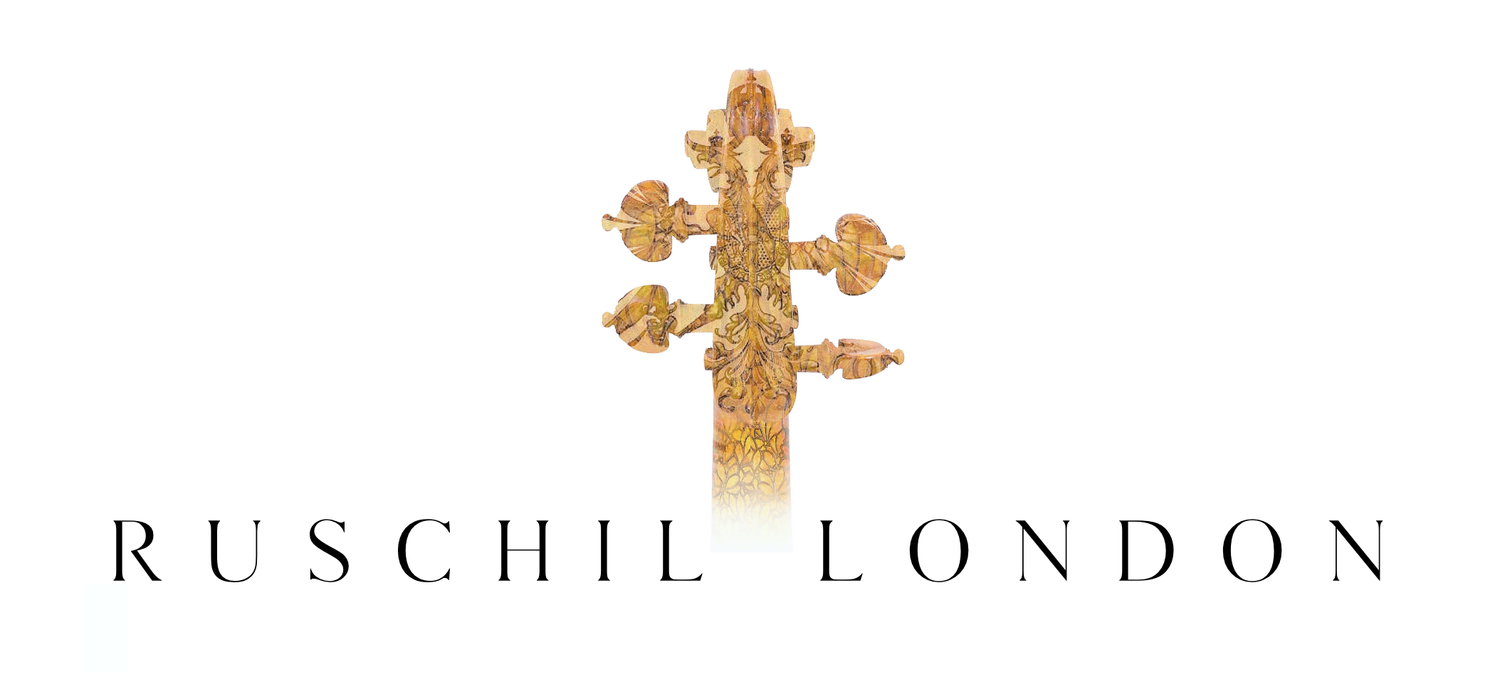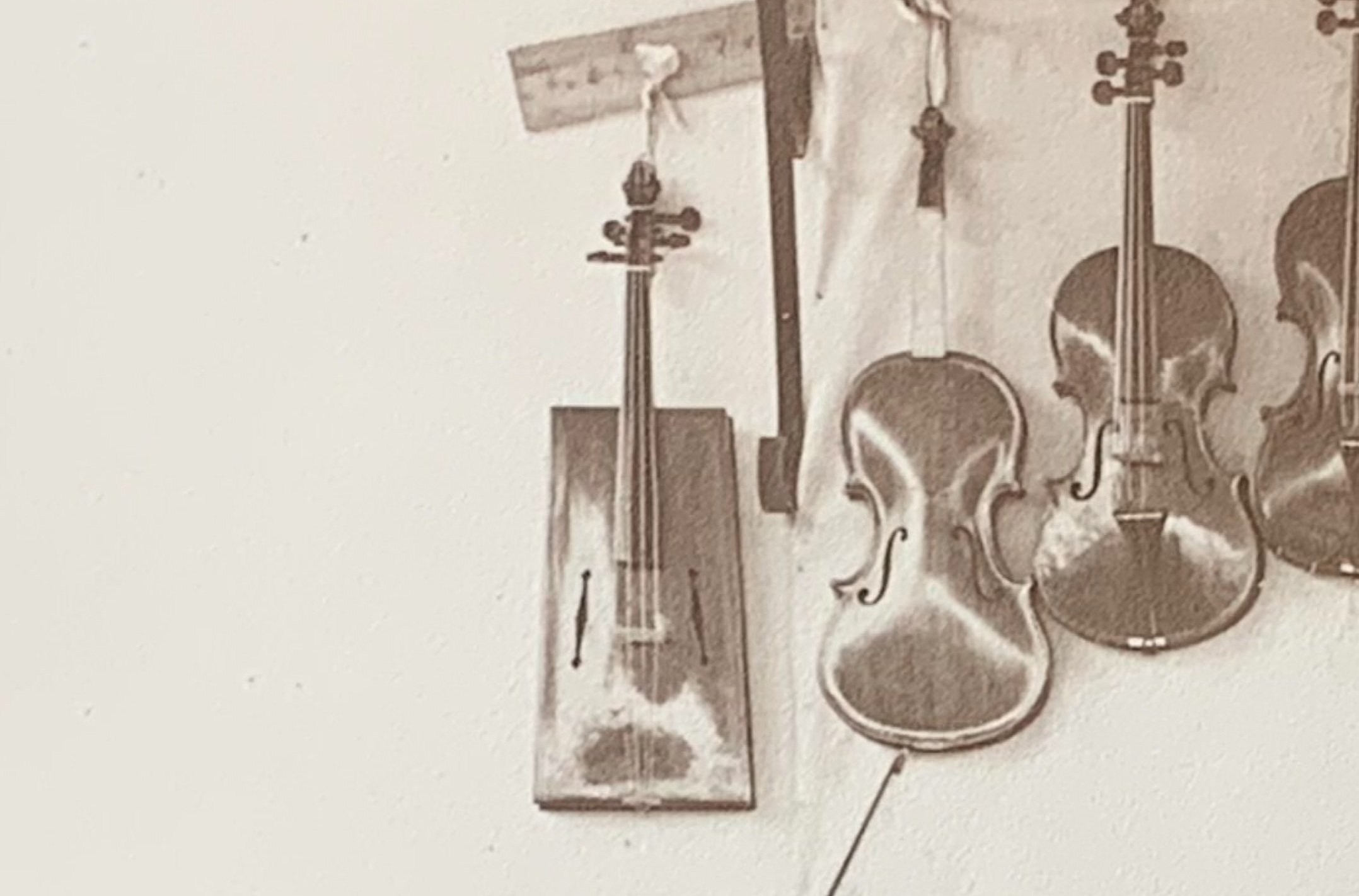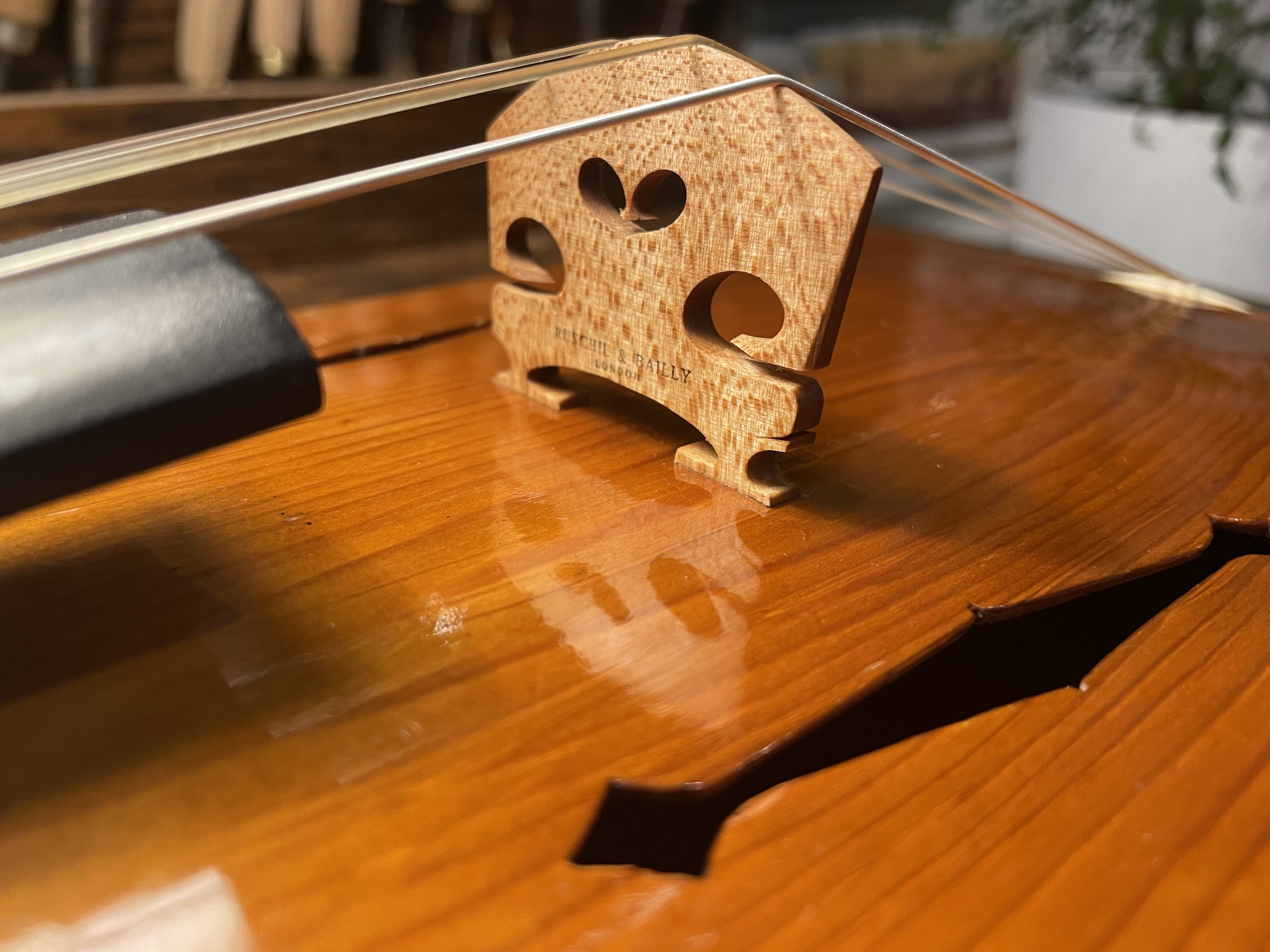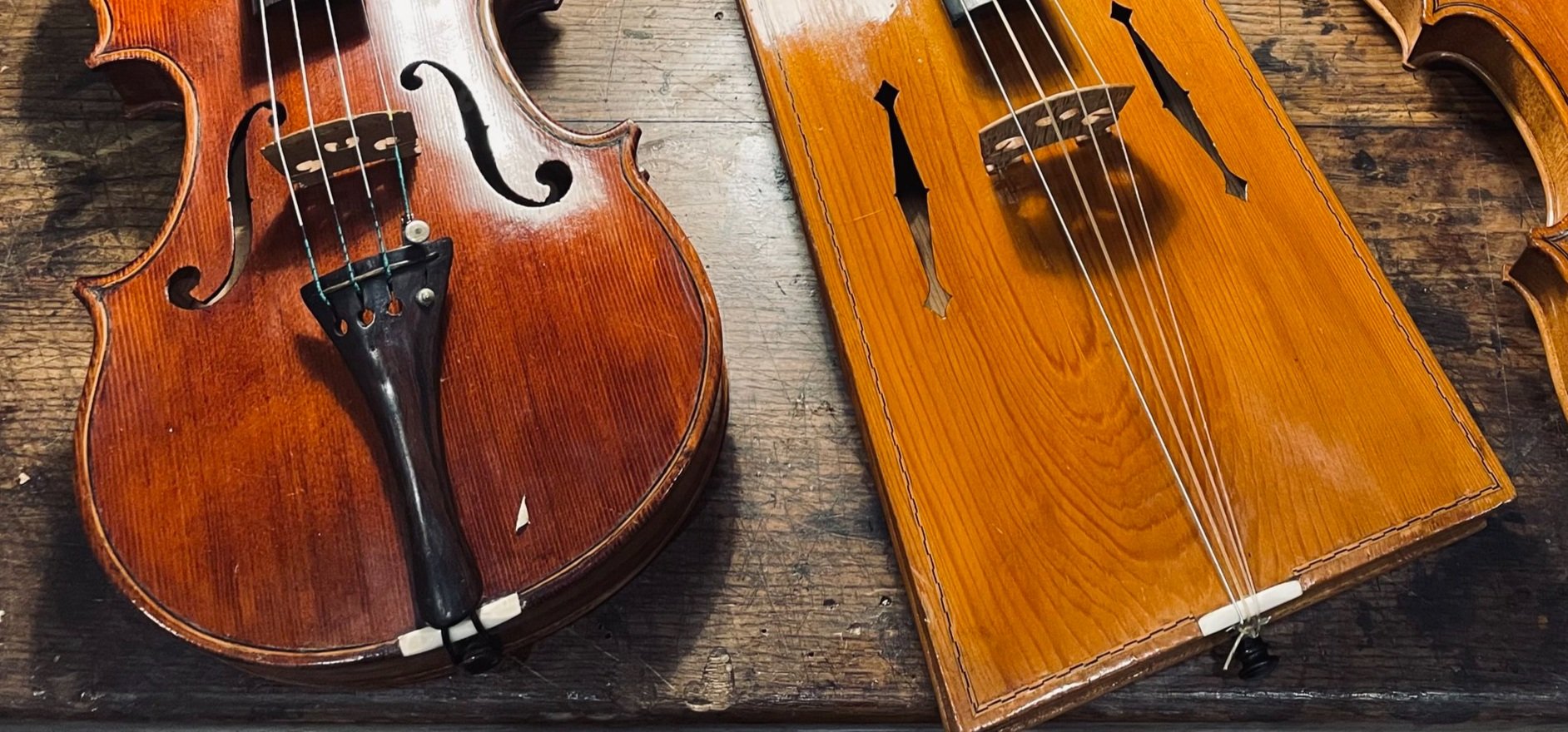The Croupier Luthier
Restoring three instruments by croupier & luthier Claude Jarlaud
Restoring violins can often be an incredibly rewarding job, especially if the task in hand is to continue the story of instruments that were made by a family member one hundred years ago.
Walking into the room with three violins that had been resting for many years, the granddaughter of Monsieur Jarlaud and her husband arrived with a job for the Ruschil & Bailly workshop: to revitalise the instruments that her grandfather had made in the 1920s & 1930s.
The first job was to measure everything up, assessing the instruments for damage and plan how to bring them back to life to continue their stories.
Unwrapping the various packages which had lain dormant for many years, the story of Monsieur Jarlaud was told by his granddaughter. A croupier at Monte Carlo casino, he was also a very talented woodworker, specialising in marquetry. Not belonging to any violin making school, it is always a fascinating experience to see and hear such instruments, as these are always very unique.
The first violin, dating back to the 1920s, was delightfully named, “Le Mal Fichu” (“The Badly Made”) as was found written inside the instrument on the back by the maker himself. A modest name indeed as the violin shone with a rich red varnish and very intricately carved scroll with precisely made inlays.
The second violin, made later on in the 1930s, was a golden brown instrument. A development of his personal model and a product of much study and practice. This violin was named “Warmwood” by his granddaughter, identifying it by its luscious coat of varnish.
The third instrument, named the “Prototype” was truly fascinating. A violin proportioned arched “box” with medieval style sound holes, a beautiful golden brown varnish and very intricate and unique inlays.
The instruments were assessed and the necessary work agreed. Small packets of strings, adjusters and other fascinating, unique objects used by the luthier were also opened, maintaining the originality and authenticity of the violins being a priority.
One challenge was to set up the “Prototype” instrument as Monsieur Jarlaud had originally intended. With violin dimensions, viola neck elevation and a bassbar inside between the two sizes, it was difficult to guess. The instrument could be set up with a modern tailpiece and modern strings and played as a violin or 14” viola.
Receiving this fascinating photo of an exhibition of his instruments from his granddaughter, it was revealed that Monsieur Jarlaud strung the instrument up with no tailpiece at all. He used real gut strings extended over the length of the whole instrument, with the strings tied to an extended endpin.
Investigating further and speaking to baroque specialists at London shop Bridgewood & Neitzert, real gut strings for viola da gamba were used, tuning to viola pitch, C G D A.
The instruments were gently cleaned, retouched and glued back together where needed. New bridges were made for two of the instrument, the third keeping its original bridge.
Particularly interesting was working and reshaping the ivory topnuts and saddles, a material not used in modern day making or restoration. Also, as seen in the picture above, the marquetry skills of Monsieur Jarlaud were revealed. Using inlays uncommon to violinmaking and more in keeping with fine furniture making, we can see the beautiful handmade purfling, precisely inlaid around the edge of the instrument.
Set up precisely, the violins and prototype were ready to be played again for the first time in many years, the story of Monsieur Jarlaud’s instruments continuing into the 21st century.
They will hopefully be played and enjoyed for many years to come.











